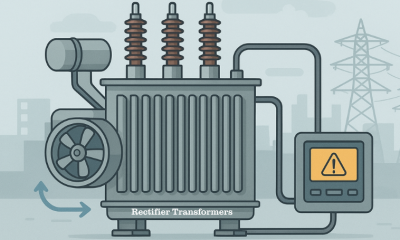Business
What Is Employee Turnover?

Employee turnover can often be misunderstood, it is actually very simple, it is the rate in which employees leave a company and have to be replaced. It widely accepted that a certain amount of employee turnover within a company is unavoidable, but a rate too high can reflect badly upon the company. For example you often get employees retiring, moving away, or having time off to have a family. It must be stated that this is not always a bad thing, it will bring new people into the workforce and this means fresh ideas and new perspectives on the organisation and methods.
Different Types
There are two very different types of employee turnover; voluntary and involuntary. Voluntary turnover is when an employee chooses to leave the company, and quite simply, involuntary is when employees are made redundant by the company, in effect being asked to leave by the company.
As a general rule, it is suggested that voluntary turnover is the measure used to discuss and compare employers as it is a reflection upon the company, does the company struggle to pay fairly? Is there a poor working atmosphere? Does the company fail to recognise hard work and loyal employees? These are just a few of the conclusions that people may come to when looking at voluntary turnover. Involuntary turnover could be caused by a variety of situations, in most cases, it is due to cut backs and financial problems that mean the company can no longer afford the employee or there has been a recent technology surge and the job they once performed can now be completed by a computer.
What is Turnover Rate?
Turnover rate is a sum of the number of employees who have left the company and it is expressed as a percentage in comparison to the total number of people employed at the company. You can compare to other companies, but be careful, as they may have different outlays and service charges that you do not. When comparing its best to try and find the most similar company to yourself, ensuring they are in the same sector, have the same number of employees, offer the same service and have a similar turnover (if you can’t find this out from Companies House, then make an educated guess!).

How to Calculate Turnover
You can calculate the turnover rate by dividing the number of employees who left by the total number of employees at the beginning of the period. This number is expressed as a percentage. You can calculate voluntary turnover, involuntary turnover, and total turnover. Here’s an example for you to see:
A company had 100 employees at the start of 2013, but by the end of 2013 6 employees decided to quit their job and a further 12 get made redundant due to financial issues and technology updates.
Voluntary turnover rate: 6/100 = 6%
Involuntary turnover rate: 12/100 = 12%
Total turnover rate for 12 months: 6+12 = 18%
How Can You Change Your Turnover?
Unfortunately, for involuntary turnover there are many different answers for different companies and so it’s best to analyse the options below and perhaps try implementing a few ideas into your company.
- Make sure the manager isn’t the problem – i.e. perhaps conducting a 360 degree feedback software to ask your employees some questions on other members of staff performance, and how it could be improved – this is completely anonymous and only you will see the results – make sure you stress that this anonymous so you get honest feedback.
- Ensure staff welfare is a top priority! We all spend more time at work then at home so it’s important to make sure that your staff are enjoying their time at work, the more staff benefits you provide the more likely they are to staff with you!
- Are they being rewarded for great work? Is there commission available in the job role? Are the target your set them achievable? Do they have weekly goals to accomplish? Employees like to be told they are doing a good job, so make sure they are being told when they complete something particular well – motivation is key!
- Perhaps organise a Christmas work party? Or to celebrate a birthday? This will enable your staff to bond with each other outside of work and hopefully create a friendlier environment to work in because everyone knows each other that little bit better – this also ties nicely into staff welfare!
The Bottom Line
- If you are a first line or middle manager then it is in your best interests to keep your employee turnover low. Here are some of the reasons why:
- It will make your job easier because you can save time and money on training new staff
- Saves the company time and money as they do not have to advertise, interview, hire and train new employees regularly – it can take up to 8 months for an employee to be fully competent in their job! That’s a lot of money you will be losing over the first initial 8 month period.
- Your employees will be happier and therefore more productive
-

 Tech11 years ago
Tech11 years agoCreating An e-Commerce Website
-

 Tech11 years ago
Tech11 years agoDesign Template Guidelines For Mobile Apps
-

 Business6 years ago
Business6 years agoWhat Is AdsSupply? A Comprehensive Review
-

 Business10 years ago
Business10 years agoThe Key Types Of Brochure Printing Services
-

 Tech8 years ago
Tech8 years agoWhen To Send Your Bulk Messages?
-

 Tech5 years ago
Tech5 years ago5 Link Building Strategies You Can Apply For Local SEO
-

 Law5 years ago
Law5 years agoHow Can A Divorce Lawyer Help You Get Through Divorce?
-

 Home Improvement6 years ago
Home Improvement6 years agoHоw tо Kеер Antѕ Out оf Yоur Kitсhеn











































